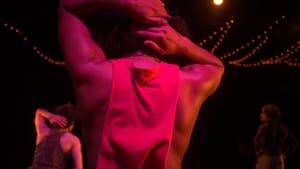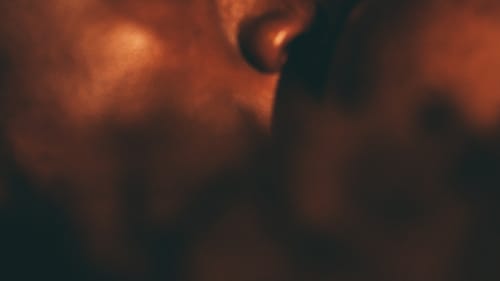Stay in the Loop
BSR publishes on a weekly schedule, with an email newsletter every Wednesday and Thursday morning. There’s no paywall, and subscribing is always free.
A performance you can feel
The Painted Bride presents jumatatu m. poe and Jermone Donte Beacham’s ‘This Is a Formation’

When I walked in the door at the Painted Bride for This Is a Formation, a staffer offered earplugs from a basket on the counter. She said the creators of the evening’s show, jumatatu m. poe and Jermone Donte Beacham, wanted the audience to feel the music. I figured she meant that literally, so I took the earplugs and the further suggestion to check my coat. I was very glad I did. The music was loud, and the room and the dancing were both hot.
A contested space
J-Sette originated in the 1970s, when Jackson State University’s majorette line, the Prancing J-Settes (then Jaycettes), replaced their twirling batons with sharp, assertively sexy dance moves performed in unison to popular music. Majorette lines of other historically black colleges and universities of the South soon abandoned their batons for J-Sette as well. These dance lines did not accept men, so some gay men began to create their own crews to perform in the stands. From there, J-Sette moved into the black gay clubs of the South and traveled north to cities like Philadelphia. Beyoncé helped the form break into mainstream pop culture in the videos for songs like “Single Ladies (Put a Ring on It).”
From its beginning, J-Sette has been contested space, claimed both by the women who created it as their own display of strength and joy and by the men who adopted it as part of the underground culture that sustained them in a world that oppressed them at every turn. What J-Sette is depends on the context, and This Is a Formation presented a performance not just of a dance style but of its context in black gay club culture.
Beacham and poe bring it to This Is a Formation, the latest dance piece of their years-long Let ‘im Move You series, a collection of performance and visual works drawing on J-Sette.
Photos, costumes, heat
As the rest of the audience waited in the lobby, a pair of dancers in flowing white costumes guided the first group of 10 through a performance space divided by white panels hanging from the ceiling. They introduced us to the videographer, MX.oops (Wendell Cooper on the project’s website). Audience members could pose in front of the “photo booth” set up near his station and have their pictures projected onto the hanging panels designed by Precious Lovell, who also consulted on the costumes we saw on a rack behind the photo booth. Our guides said the rack of brightly colored leggings and tops, skirts, turbans, and T-shirts was off-limits to us. (Throughout the night the dancers changed and sometimes exchanged costumes, only partly obscured by the rack itself or by distraction while the dancing drew our attention elsewhere.)
We met DJ Zen Jefferson, who was introduced by various names throughout the evening, and then we were left to our own devices as the next and then the next group of 10 made the same rounds. The dark room was stiflingly hot. The risers where an audience might normally sit were closed off. Half a dozen chairs were scattered around the room.

Following along
Gradually, the performers began to dance a languorous form — recognizable arm positions and body motions, but slowed to a sensual crawl as the dancers slid through the audience, performing genderfluid sexuality with the dance. In front of the photo booth, a dancer in mid-change danced naked. The video picked up his image, fractured it, and projected shards of dance on the white cloth panels.
The music picked up in tempo and volume, pounding an urgent rhythm that reverberated in our chests. The crew, which included two women among the seven dancers in this ensemble of all genders, shifted into the sharp, fast, J-Sette formations, a call and response in which the leader sets the pattern of raised arms and bucking hips and march-like steps and the crew repeats it. The choreographers told us the pattern changes with each performance. The dancers must watch the leader and pick up the steps on the spot, using their knowledge of their crew leader’s style, just like in the clubs. The lighting by Juan “Coel” Rodriguez sometimes focused on the dancers in front of the DJ, and sometimes left the performers dancing in obscure light on the edges of the audience.
Throughout the performance we stood, still hot, trying to see the action and getting in each other’s way. A few parents carried small children on their shoulders, making it harder still for those of us on the ground to see. This made a critique of the dancing itself impossible, but as a performance of queer black culture, the show made its point by celebrating a world full of sweat and joy and gender-defying dance — and invited its audience to engage the joy.
What, When, Where
Let ‘im Move You: This Is a Formation. By jumatatu m. poe and Jermone Donte Beacham. February 8 and 9, 2019, at the Painted Bride Art Center, 230 Vine Street, Philadelphia.
Sign up for our newsletter
All of the week's new articles, all in one place. Sign up for the free weekly BSR newsletters, and don't miss a conversation.

 Camille Bacon-Smith
Camille Bacon-Smith